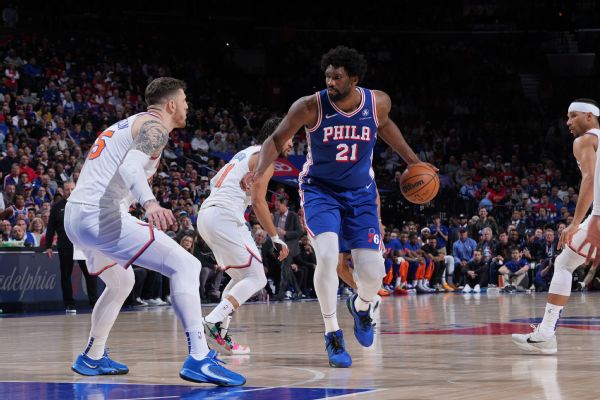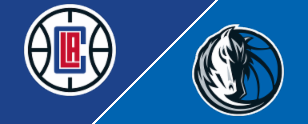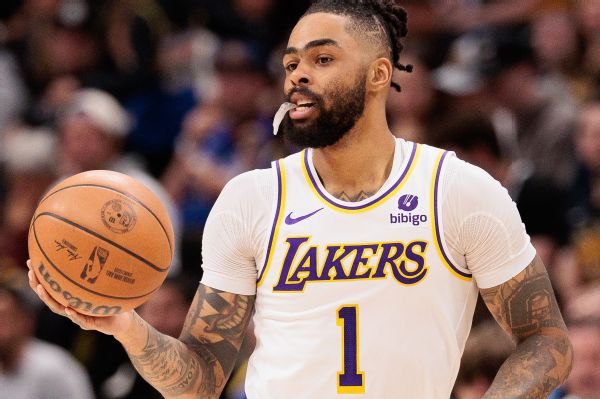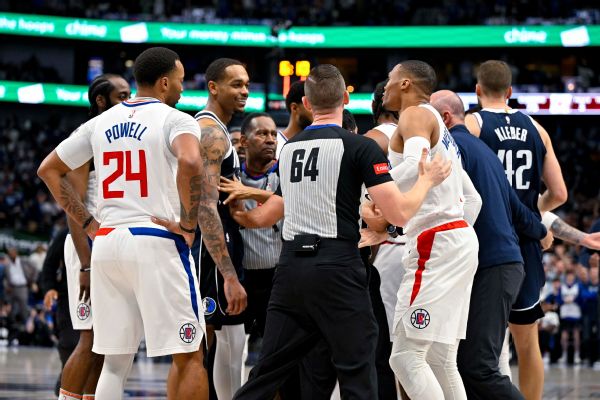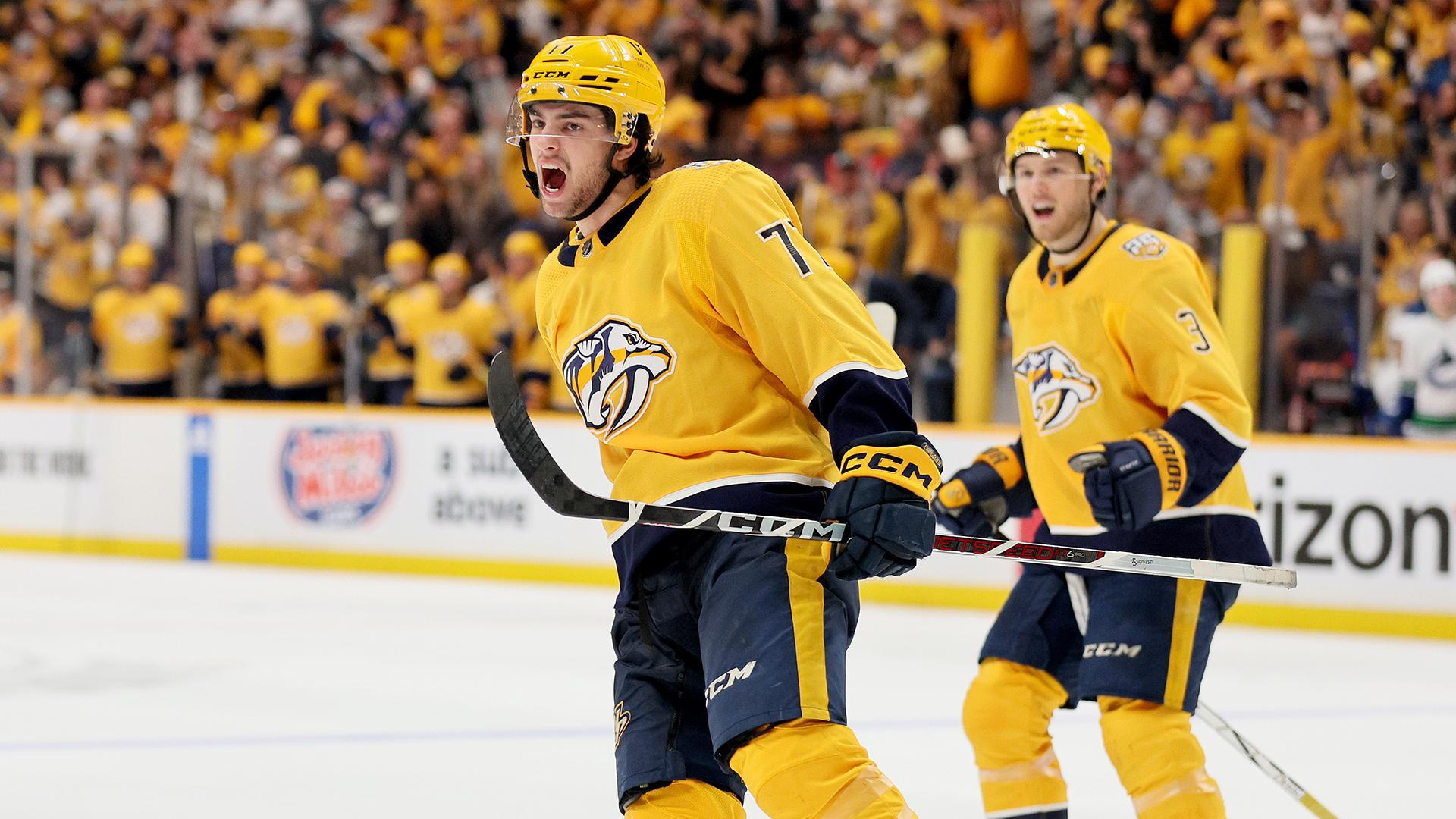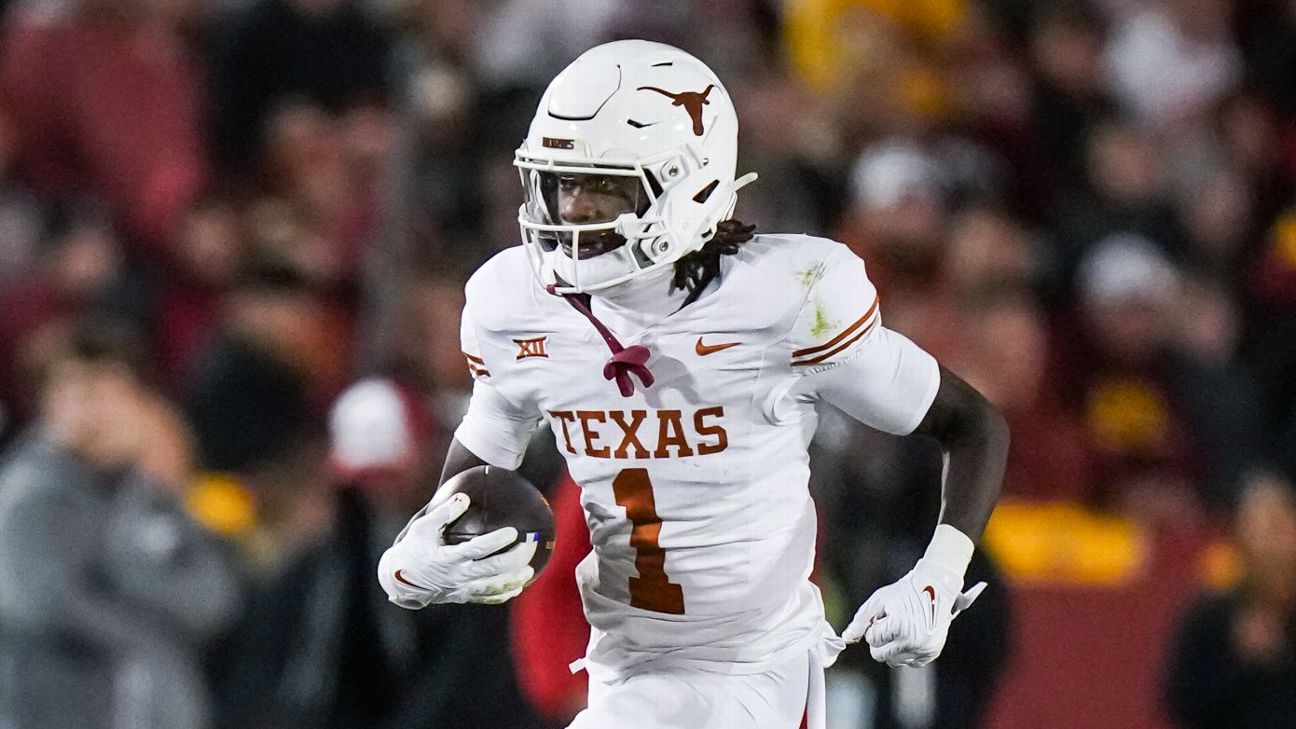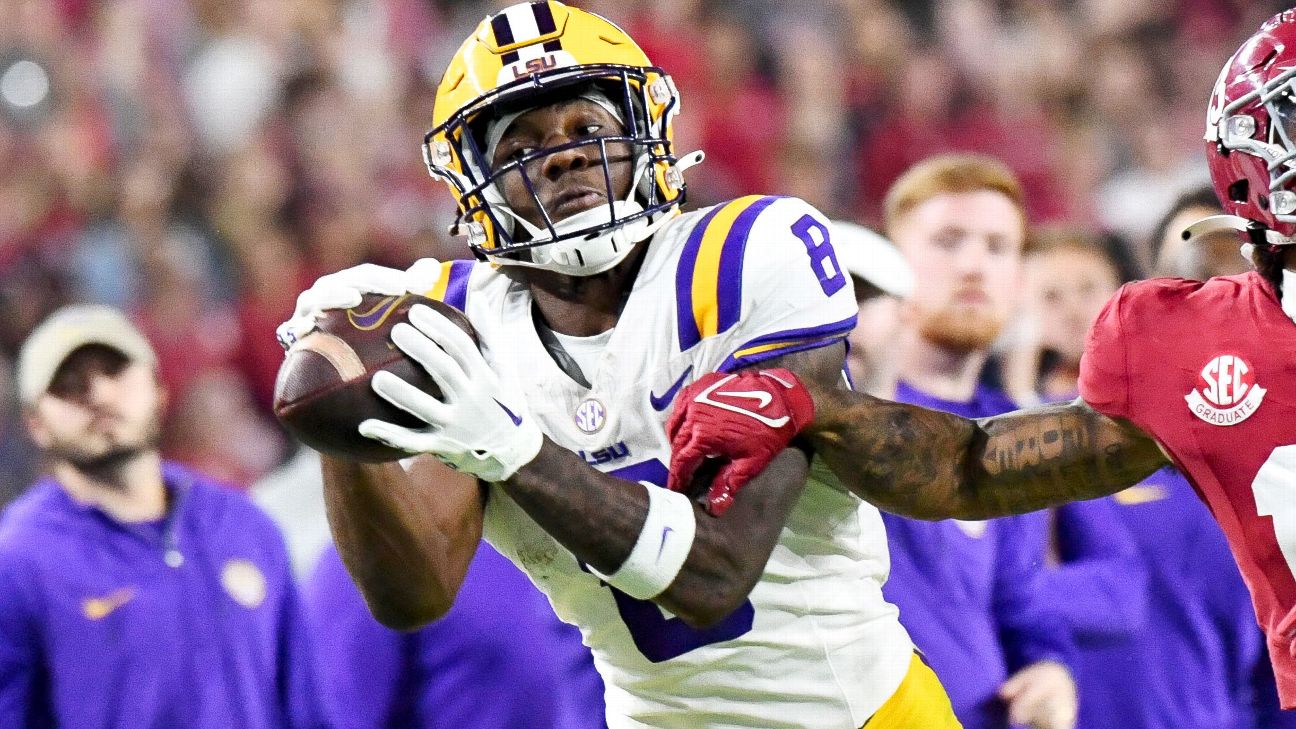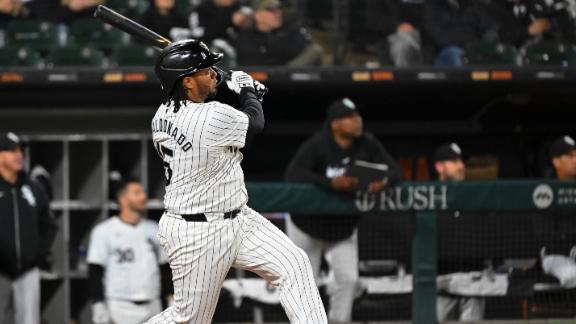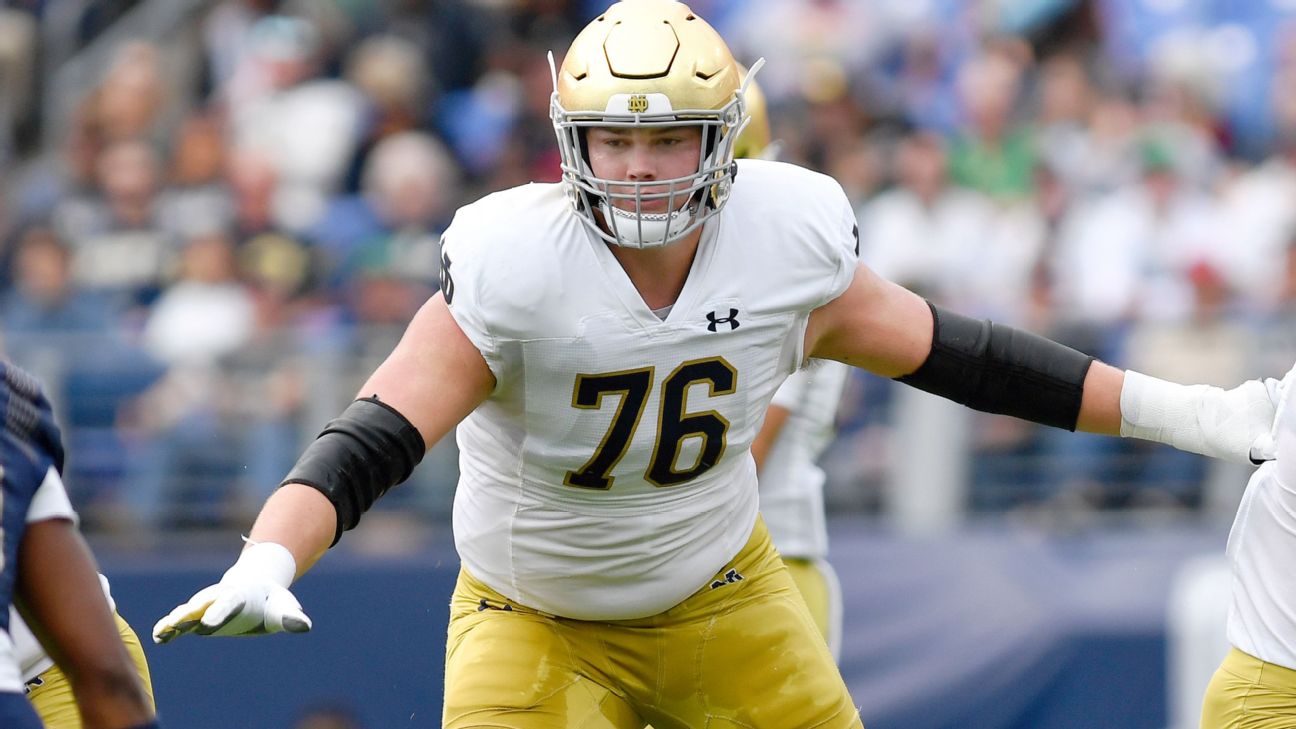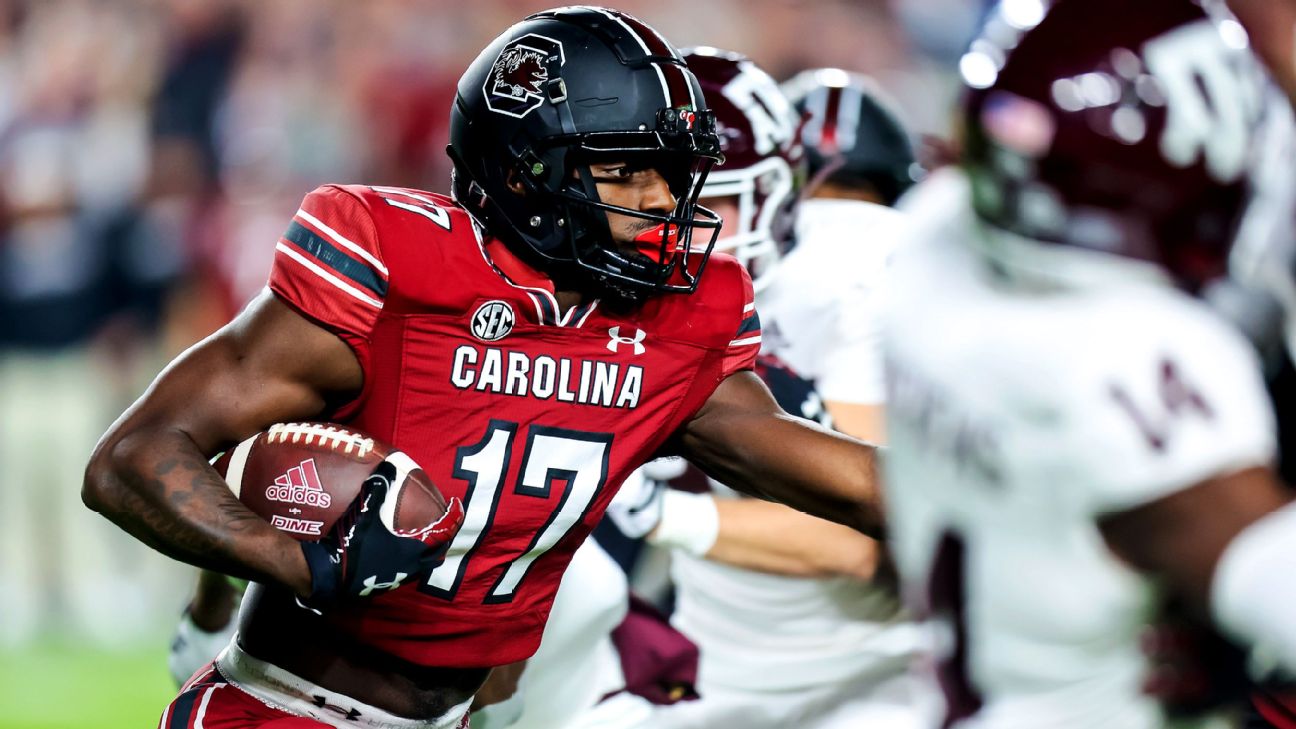![The Dallas Cowboys offensive line gets ready for a play during the game between the Dallas Cowboys and the New York Jets on September 17, 2023 at AT&T Stadium. [608x342]](https://a.espncdn.com/photo/2024/0327/r1310839_608x342_16-9.jpg)
With the flood of deals from the first few days of NFL free agency down to a trickle this week, it might feel like free agency is over. It's not. There's still plenty of work to be done for teams that need to fill holes on their roster, including the Super Bowl champion Chiefs and many of the teams they beat along the way.
Let's get into some of the biggest remaining roster holes that were created by offseason departures. I'm also going to cover what each team has done to try to solve those issues and what might be next, either by signing players over the next few months or using picks in April's NFL draft. We'll start in Baltimore and hit nine teams (in no order):
Jump to a team with an issue: Broncos | Chargers | Chiefs Cowboys | Falcons | Giants Rams | Ravens | Saints
Offensive line: Baltimore RavensOut: G John Simpson, G Kevin Zeitler, OT Morgan Moses
The Ravens have a long-standing reputation for being comfortable with letting offensive linemen leave in free agency. They've usually wanted to lock down the left tackle spot -- where Ronnie Stanley took a pay cut to stay with the team -- and they made an exception in the past for star guard Marshal Yanda, but they have let standouts Kelechi Osemele (2016) and Ryan Jensen (2018) walk out the door in the past decade, trusting they could find replacements in the draft or at a reasonable price in free agency.
Shedding three starters in one offseason is a different story. While the three players Baltimore lost were success stories for its pro personnel department after being acquired in free agency (Moses and Zeitler) and on waivers (Simpson), the organization will be without three players who played well last season. Simpson and Zeitler were a physically punishing pair of guards, with Simpson winning the left guard job after being cut by the Raiders at the end of 2021. Moses held down right tackle for 31 starts over the past two seasons after being signed away from the Commanders, but the Ravens traded him to the Jets for a sixth-round pick and a swap of fourth-rounders. With Stanley limited by a long-standing ankle problem, the Ravens' only above-average returning lineman is center Tyler Linderbaum.
In: G/OT Josh Jones
The only player brought in as a potential replacement is Jones, once a Cardinals tackle prospect before moving to the Texans and opening 2023 as their starting left guard. The emergence of George Fant at right tackle led Houston to move Tytus Howard to the left guard role, and Jones played a total of 10 offensive snaps from Week 4 onward. Like they did on Simpson, the Ravens are likely taking a flier on Jones as depth they can mold into a more useful player with better coaching. It would be a surprise if he were in the starting lineup regularly in 2024.
Otherwise, the Ravens are looking at promoting players into larger roles. Patrick Mekari shined when he was forced to play right tackle because of injuries in 2021; the team's longtime utility lineman might get a shot at the starting right tackle gig. Daniel Faalele, a 380-pound tackle who was drafted in Round 4 in 2022, could also be in the mix, although he hasn't looked like an NFL-caliber pass protector during his first two seasons as a backup.
The only player on the interior with experience is fourth-year guard Ben Cleveland, who made seven starts over his first three seasons with the team. He's likely going to get the first crack at replacing Zeitler in the right guard spot. When you consider Cleveland himself is a free agent after 2024, though, the Ravens need to start thinking about both their short- and long-term future up front. Linderbaum is the only player on the roster likely to be starting for the team in 2025.
What could be next: Signing a veteran free agent or two at the right time.
Baltimore is known for being conscious of the league's compensatory pick formula, and that aptitude has served it well over the years: it has added Jensen, Kyle Juszczyk and Isaiah Likely to its roster with compensatory draft picks in the past decade. With the Ravens projected to land the maximum of four compensatory picks as a result of free agency, general manager Eric DeCosta will be hesitant to avoid making moves that cost them what amounts to free money in the draft.
There are ways around those concerns. If the deals the Ravens sign are small enough, the players will only impact players on the bottom end of the compensatory formula, and they already have more qualifying players out of town in that range than ones coming back in. They can wait until after June 1 to sign players, which would be the point where the compensatory formula locks and additions don't impact the draft picks.
They can also sign players who were cut by other teams, which led me to one possible addition: former Jets and 49ers guard Laken Tomlinson, who was a cap casualty in New York. Tomlinson, 32, wasn't sustainable for the Jets with a $12 million base salary, but he wouldn't land anywhere near that amount in free agency, and the Ravens still have about $14 million in cap space. With such uncertainty looming at left guard, I'd be surprised if they didn't at least have a serious conversation about trying to bring in Tomlinson, who rated as an above-average guard as recently as 2022.
Otherwise, the Ravens will need to address the offensive line in April's draft. They have no fear of drafting and developing talent up front, but in a universe in which they are paying Lamar Jackson $52 million per season, there were inevitably going to be cutbacks elsewhere. Some of those cuts appear to have come right in front of their quarterback.
Quarterback: Denver BroncosOut: Russell Wilson
The Broncos are eating an NFL-record $85 million in dead money over the next two years to move on from their ill-fated Wilson trade and contract extension, including $53 million in 2024. The only players in the league with a larger cap hit will be Deshaun Watson and Dak Prescott, while Wilson will be making just over $1 million to start for the Steelers. What can you say? The Wilson era never seemed to launch in Denver, and the Broncos wanted off that ride before they were committed to him in 2025, even if it meant paying him to play somewhere else next season.
In: No one
The two quarterbacks left on the Broncos' roster are holdovers from last season. The projected starter is Jarrett Stidham, who has carved out a niche in the NFL as the passer who fills in when teams bench their starters to avoid triggering their injury guarantees. In 2022, Stidham filled in for Derek Carr in Las Vegas. Last season, he replaced Wilson in Denver. Stidham has a sub-60% completion percentage and eight interceptions on 197 career pass attempts, so he hasn't exhibited the sort of performance that would justify a starting job. Ben DiNucci, who ceded his role as the NFL's most prominent Italian American backup quarterback to Tommy DeVito a year ago, is on the roster as the backup.
What could be next: Drafting one of the third-tier quarterbacks.
The Broncos don't have a lot of cap space, and while coach Sean Payton talked about the possibility of trading up for a quarterback in April's draft, the moves to acquire Wilson and Payton have cost the franchise significant draft capital over the past few seasons. Denver hasn't had a first-round pick in 2022 or 2023, and the only players drafted by the team before 2021 who are still left on the roster are Garett Bolles, Courtland Sutton, Riley Dixon and Justin Strnad.
With the dead cap and the missing young talent, the Broncos desperately need to hold on to draft capital. Last year, in Payton's first season, they responded to that need by trading up three times in the first four rounds. As a result of those various moves, they are already down the 2024 second- and third-round picks they received from the Seahawks as part of the Wilson deal. That's going to both make it harder for them to move up for a quarterback (in contrast to teams like the Vikings) and make the need to find meaningful pieces with the picks they have left even more important.
Stuck behind the Vikings at pick No. 12, the Broncos might not be in position to land one of the top four quarterbacks in this class. It wouldn't be shocking if Payton went after Bo Nix (Oregon), Spencer Rattler (South Carolina) or Michael Penix Jr. (Washington) outside of the first round, hoping to capture lightning in a bottle without needing to trade up in Round 1. Denver could also opt for a bridge quarterback such as Carson Wentz, but it seems set to move forward with Stidham in that role.
Offensive tackle: New Orleans SaintsOut: Andrus Peat
The Saints felt pretty good about their tackle situation heading into last season, as they should have. On the right side was stalwart Ryan Ramczyk, while 2022 first-round pick Trevor Penning was set to take over at left tackle. In reserve, they had valuable swingman James Hurst and Peat, a 2015 first-round pick and college tackle who had spent his New Orleans career at guard. Peat's play had been disappointing after he signed an extension in 2020, though, and he took pay cut to stick with the team in 2023.
A lot has happened since then. Penning struggled mightily to begin the season and was benched in Week 6; he played 13 offensive snaps the rest of the way. Peat started the season at left guard, and when he went down injured in October, he was forced to step in for Penning at left tackle. Peat handled the job surprisingly well, and when Penning was benched and Hurst returned to the lineup, Hurst stuck at left guard, leaving Peat to protect Derek Carr's blind side.
Here's where the Saints' cap situation made things tricky. Peat's contract voided after the season, and New Orleans wasn't able to sign him to a new deal, leaving $13.6 million in dead money on its 2024 cap. Ramczyk missed the final four games of the season with a knee issue, and coach Dennis Allen said early this week Ramczyk's knee is not recovering as quickly as hoped. Suddenly, there are worries the Saints might have to replace both of their starting tackles from 2023, and they'll need to do so in a market in which many of the top tackle options have signed elsewhere.
In: Oli Udoh
Hurst and Ramczyk took pay cuts to stay as opposed to the sort of classic contract restructures the Saints use in which they pay a player in full but spread the money over five seasons. The only addition they have made on the edge is Udoh, who had served as a utility lineman for the Vikings before tearing his quadriceps muscle in September and missing most of the 2023 season. He's more likely a replacement for Hurst as the swing lineman (with Hurst penciled in as the full-time left guard) than a potential starting tackle. Landon Young, who took over for Ramczyk in December before getting injured himself, is also on the roster.
What could be next: Re-signing Peat.
It would have made sense to agree to a deal with Peat before the start of the new league year to mitigate the dead money on his deal, but the Saints might have been more optimistic then about Ramczyk's chances of being healthy. Peat's market hasn't developed, and there aren't many other players left in free agency with a track record of playing left tackle. David Bakhtiari and Mekhi Becton have significant injury histories, and Peat might have been better than Charles Leno and Donovan Smith a year ago. Reuniting with Peat would also afford New Orleans the flexibility of moving Hurst to left tackle and bumping Peat back inside to guard.
The Saints also have the 14th overall pick and could use that on a tackle prospect, but would there be any hesitation on their end after seemingly swinging and missing on Penning? This organization has used five first- or second-round picks on offensive linemen going back to Peat's selection in 2015, and while that's a perfectly reasonable way to build a football team, they have needs elsewhere that they can't fill with high-end veterans in free agency. At the same time, if they've given up on Penning and Ramczyk can't play, they might need to re-sign Peat and use their top pick on an offensive lineman.
Wide receiver: Los Angeles ChargersOut: Keenan Allen, Mike Williams
A total of 1,213 catches and 15,336 receiving yards walked out the door this offseason for the Chargers, who were forced to take drastic measures to mitigate a disastrous cap situation. They asked four key veterans to take pay cuts. Joey Bosa and Khalil Mack agreed to do so and stuck around with the organization. Williams was released, in part because he's recovering from a torn left ACL. Allen declined and was traded to the Bears for a fourth-round pick. The Chargers probably would have preferred to keep one of their standout wide receivers, but they lost both in the end.
In: No one
Former general manager Tom Telesco likely knew this was coming and tried to prepare for the future by using a 2023 first-round pick on Quentin Johnston, but Johnston failed to garner steady targets (67 total) and had significant drop issues (4.5%) during his debut season. It's too early to give up on the 22-year-old, but the Chargers couldn't go into 2024 with him as their projected top wideout, even if that might have been the plan when he was drafted a year ago.
Instead, the Chargers and new coach Jim Harbaugh have been more aggressive at tight end, where offensive coordinator Greg Roman is likely to employ more two-tight end sets. They lost Gerald Everett to the Bears in free agency but signed cap casualties Will Dissly and Hayden Hurst to play alongside 6-foot-8 holdover Donald Parham. They could bring back former fifth wideout Jalen Guyton, but as of now the depth chart at wideout consists of Johnston, Joshua Palmer and Derius Davis.
What could be next: Using a first-round pick at wide receiver.
Teams generally don't like to use back-to-back first-round picks at wide receiver, with just one team having done so since 2005. That team was the Eagles, who drafted Jalen Reagor in 2020 and then selected DeVonta Smith in 2021. That could be a similar sort of comp for the Chargers, where the Eagles were so disappointed and doubtful of Reagor's future after one season they felt it necessary to make another dip into the first round of the draft at wide receiver.
Will the Chargers take that wide receiver with the No. 5 pick, though? Marvin Harrison Jr. (Ohio State), Malik Nabers (LSU) and Rome Odunze (Washington) could all be on the board for the Chargers with that pick, but the franchise might prefer to trade down and amass extra capital to help rebuild a flagging roster. With 2024 being regarded as one of the deepest and most impressive wideout draft classes in recent memory, Los Angeles should be able to trade down and grab at least one useful wide receiver during the first two days of the draft.
Another option would be to take tight end Brock Bowers (Georgia), who could be the equivalent of Mark Andrews in Roman's offense for Justin Herbert. The investments the Chargers have already made at tight end this offseason, though, seem to point toward Bowers finding a home elsewhere.
Pass-rusher: Atlanta FalconsOut: Calais Campbell, Bud Dupree
Finding pass-rushers who can create pressures against offensive tackles has seemingly been a problem for the Falcons since John Abraham left town in 2013. Since then, they have had just one season in which a player reached double-digit sacks, when Vic Beasley had 15.5 takedowns during Atlanta's 2016 Super Bowl campaign. From 2013 to 2023, the Falcons have posted the league's worst sack rate (4.7%) and pressure rate (24.4%). Both big-name free agents (Dante Fowler Jr., Osi Umenyiora) and first-round picks (Beasley, Takkarist McKinley) have failed to become consistent solutions.
Viewed from that lens, it might be concerning that Atlanta's two leading pass-rushers from 2023 are free agents. Campbell and Dupree tied for the team lead with 6.5 sacks each, and the ageless Campbell paced all Falcons with 17 quarterback knockdowns. They had a league-average defense last season in terms of both blitzing and creating pressure, which is an impressive mark by their standards. And for most of the season, the defense was a plus: Ryan Nielsen's unit ranked fifth in the league in points allowed per drive before giving up 85 points over the final two games, to the Bears and Saints.
In: No one
Nielsen and coach Arthur Smith are gone and replaced by former Bucs coach Raheem Morris, who hired Jimmy Lake as his defensive coordinator. While the Falcons ran a 4-3 base under Nielsen, they appear to be switching to a 3-4 alignment with Lake calling the shots. Those distinctions mean less than ever before given how often teams play in their sub-packages, but Campbell wouldn't play on the edge as a 3-4 outside linebacker. It's also unclear if this defense will retain some of the Vic Fangio principles whom Morris inherited from Brandon Staley with the Rams.
With all that being said, while the Falcons have let Campbell and Dupree hit the open market, the team hasn't imported a single defensive player this offseason. It has made significant investments on the offensive side of the ball in adding Kirk Cousins and Darnell Mooney to rebuild the passing game, but we haven't seen Morris & Co. add any talent to try to recalibrate things on the other side of the ball.
Arnold Ebiketie, a second-round pick in 2022, finished a half-sack behind Campbell and Dupree, and he should be in position to start at outside linebacker in 2024. Beyond him, there is Lorenzo Carter and DeAngelo Malone, neither of whom should be guaranteed a starting role on the edge.
What could be next: Adding a veteran edge rusher.
The Falcons should have their pick of the defensive players on the board at No. 8 and could select edge rusher Dallas Turner (Alabama), who had 10 sacks last season. I'm not sure Turner and Ebiketie would be enough for a full season, even if Turner lives up to expectations as a potential top-10 pick.
Adding at least one veteran to the mix would make sense. Dupree played outside linebacker for the Steelers in their 3-4 alignment and had a resurgent year for the Falcons after disappointing in Tennessee; the born-and-raised Georgian is a solid two-way player and would make sense on a one-year deal if his market doesn't develop elsewhere.
Left tackle: Kansas City ChiefsOut: Donovan Smith
The Chiefs could start their fourth left tackle in five years in front of Patrick Mahomes. After Eric Fisher tore his Achilles tendon during the 2020 postseason, the team moved on from the 2013 No. 1 overall pick by trading for Ravens tackle Orlando Brown Jr. Brown spent 2021 and 2022 at left tackle for Kansas City, but after being franchise-tagged once, the franchise let him leave in free agency and replaced him with Smith, who started 12 games for Andy Reid & Co. as they won their third title of the Mahomes era last season.
In: No one
Smith was on a one-year deal for $3 million, so it was always likely he would move on in 2024. He hasn't yet signed elsewhere, so a reunion is possible, but it would probably need to be on another below-market deal.
There are a couple of options on the roster. One is 2023 third-round pick Wanya Morris, who started while Smith was sidelined due to a neck injury. Morris didn't fare well, allowing a 14.3% pressure rate across 223 pass-blocking opportunities, per NFL Next Gen Stats. The six sacks he allowed from Week 12 onward were the third most of any player in the league, trailing only Ikem Ekwonu and Mekhi Becton.
The other choice would be right tackle Jawaan Taylor, who was signed to a four-year, $80 million deal that reset the market for players on that side of the line. At first, it seemed he was being signed as a potential left tackle, only for the subsequent addition of Smith to keep Taylor on his more familiar right side. Taylor's deal made more sense as a left tackle, although moving him there would open up a hole on the right side of the line.
What could be next: Adding a veteran left tackle on an affordable contract.
Owing to the massive deal handed out to star defensive tackle Chris Jones and the franchise tag used on cornerback L'Jarius Sneed, the Chiefs didn't have much financial flexibility early in free agency. The team brought in wideout Marquise Brown, but Brown's deal was close to a match for what they had been paying Marquez Valdes-Scantling, who was released. Trading Sneed to the Titans also opened up cap space for general manager Brett Veach to work with in the coming weeks.
There's not really a left tackle remaining on the market who should command a premium, however. Many -- including Becton, Bakhtiari and Smith -- have injury histories that would cause teams to hesitate in handing out a long-term deal. The Chiefs also have to work on extensions for other players in their lineup, including linebacker Nick Bolton, center Creed Humphrey and right guard Trey Smith. Bringing in a veteran on a reasonable deal, as they did with Donovan Smith in May, would give Kansas City a hedge if Morris isn't ready to step in at left tackle on a full-time basis.
Defensive tackle: Los Angeles RamsOut: Aaron Donald
There's no replacing one of the greatest defensive players in league history, full stop. There were rumors around Donald's retirement after the Rams won Super Bowl LVI, but the future Hall of Famer returned for two more seasons, finishing his 10-year career by leading the Rams back to an unexpected postseason berth in 2023.
Donald's sack totals had fallen off a bit from the perennial double-digit numbers he had posted earlier in his career. But make no mistake: He was still a devastating player. He posted a league-best 19.9% pass rush win rate at defensive tackle last season, narrowly topping Chris Jones. Donald recorded a pass rush win more than 35% of the time teams were brave enough to try to block him up one-on-one; the only players who beat their blocker more often were Micah Parsons, Myles Garrett and Dexter Lawrence.
And of course, Donald's presence and gravity made the players around him better. Edge rushers such as Dante Fowler Jr. and Von Miller were able to sign massive contracts in free agency after revitalizing their careers next to Donald. Last season, Donald helped rookies Byron Young and Kobie Turner get off to impressive starts; now, those guys are set to lead the way for the Rams.
In: No one
General manager Les Snead made sound investments in the secondary this offseason, importing veterans Darious Williams, Kamren Curl and most recently Tre'Davious White on reasonable deals. Donald only retired on March 15, and the Rams didn't make any cap moves beforehand to suggest they knew a retirement was coming, so it's entirely possible the organization is still recovering from losing arguably the best player in modern franchise history.
What could be next: Waiting out the market into the summer.
There's no way the Rams are going to find someone who can approximate Donald's production and ferocity, let alone two weeks into the free agent market. They have placed an emphasis on targeting young players when they've signed free agents who impact the compensatory formula, which has led them to Curl (age 25), Colby Parkinson (25) and Jonah Jackson (27).
The veterans they've added as cap casualties are older, and with a paucity of interior disruptors on the open market, my guess is the Rams will wait out the post-draft market to see if any players hit free agency or become available via trades. They could call up the Jets about John Franklin-Myers or the Chargers about Morgan Fox, although both would have been potential cap cuts before the new league year and instead were kept on their respective rosters. Neither one is a Donald replacement, but they could be part of the cast of characters who help L.A. try to move on (or evolve) in a post-Donald world.
Secondary: New York GiantsOut: Adoree' Jackson, Xavier McKinney
The Giants wanted to trade for edge rusher Brian Burns and pay him more than $28 million per year, which means they have to make cutbacks somewhere. For general manager Joe Schoen, those cutbacks appear to be in the secondary. New York let its two most prominent defensive backs hit the open market. McKinney immediately signed a four-year, $68 million deal with the Packers, becoming one of the few safeties in a loaded market to get paid. Jackson remains unsigned.
In: Jalen Mills
The one veteran addition the Giants have made is bringing in Mills, who fell out of the Patriots' starting lineup and into a situational role last season. His one-year deal was for just over $1 million, which suggests he is joining to serve in a utility role as opposed to being guaranteed a starting opportunity.
Without any other additions, new defensive coordinator Shane Bowen will have to count on getting more out of the young players the Giants had on their roster while struggling a season ago. Deonte Banks, a first-round pick last year, is going to get more opportunities. But is Cor'Dale Flott a legitimate starting-caliber cornerback? Is Jason Pinnock capable of playing center field all season or is he best served in the box more often? Can Dane Belton, who played 26% of the defensive snaps in his second season in 2023, step in and replicate McKinney's physicality while occasionally holding up as a deep safety?
One thing that should help is the change in the Giants' scheme. Previous coordinator Don Martindale blitzed a league-high 43% of the time over the past two seasons; no other team sent extra rushers more than 36% of the time. Bowen's Titans blitzed just 19.3% of the time over that stretch, the third-lowest rate of any defense. Big Blue's defensive backs shouldn't be on an island as often as they were. If Burns can form a devastating D-line with Dexter Lawrence and Kayvon Thibodeaux, the Giants should be able to get pressure on opposing quarterbacks without needing to blitz.
What could be next: Signing one of the many veteran safeties still available.
The Giants might feel good about Pinnock's future, and Belton showed his promise with a three-takeaway game late in the season, but I would be surprised if they didn't take advantage of the market and add at least one veteran safety. Justin Simmons, Quandre Diggs, Marcus Maye, Tashaun Gipson and Julian Blackmon are all free agents, and the Giants have arguably the weakest pair of starting safeties on paper. Adding one of those guys on a one-year deal would bring a veteran into the defensive backs room and help a team that is otherwise set to run out a young secondary.
Offensive Line: Dallas CowboysOut: Tyron Smith, Tyler Biadasz
This is the thinnest the Cowboys have been up front in years. Smith, who held down the left tackle spot when healthy dating all the way back to 2011, left for the Jets in free agency. He was one of the league's best left tackles last season. Biadasz never quite hit the heights of predecessor Travis Frederick, but the 2020 fourth-rounder emerged as a solid center, if perhaps one blessed to be surrounded by great talent. Biadasz followed Dan Quinn to the Commanders as a free agent.
On top of that, there are questions about who's left. Tyler Smith, a first-round pick in 2022, has been excellent at left guard, but it's unclear what he'll look like if the Cowboys move him to left tackle, as has been rumored. Right guard Zack Martin is still playing at a high level, but he is 33 years old, and there are no guarantees for offensive linemen as they hit their mid-30s, even future Hall of Famers. Right tackle Terence Steele returned from a torn left ACL and didn't look like his old self, allowing team highs in pressure rate (9.5%) and sacks (seven).
In a perfect world, Smith moves to left tackle without missing a beat, Martin continues to play at a Hall of Fame level, Steele gets healthier and returns to his pre-injury form, and the Cowboys find solutions at left guard and center. What's making that harder?
In: No one
The Cowboys haven't added a single veteran to their offensive line. Or their offense. The only veteran they have signed in free agency is former Vikings and Chargers linebacker Eric Kendricks, who will replace the retired Leighton Vander Esch. They have been remarkably conservative in free agency after winning the NFC East and getting blown out on their home turf by the Packers in the wild-card round.
Why? Things are about to get very expensive in Big D. CeeDee Lamb and Micah Parsons are now eligible for extensions, and both stars should expect to top the market at their respective positions. Lamb and Parsons combined to earn an average of about $7.8 million per season across their rookie deals. They will combine to make about $65 million per season on their new deals. That's about $57 million or so the organization will need to make up elsewhere on its roster.
In addition, Dak Prescott is entering the final year of his deal, and the Cowboys won't be able to franchise-tag their quarterback if they aren't able to come to terms on a new deal before next season. That combination would seemingly lead Dallas to give Prescott an extension that both keeps the quarterback in town for years to come and reduces his cap hit in the short term, but the two sides haven't been able to find common ground on a new deal. Stay tuned there.
Last year, I said 2023 was Dallas' best chance of winning a Super Bowl because of those financial circumstances. It will be much harder in 2024 because it has needed to make cutbacks elsewhere around the roster for financial reasons.
What could be next: Adding at least one veteran lineman.
The Cowboys probably want to see whether Tyler Smith can hold up at left tackle, and there isn't much left on the free agent market at center. One remaining pivot is former Dolphins and Cowboys veteran Connor Williams, who is recovering from a torn ACL. Bringing back Williams would give Dallas depth at both left guard and center, affording coach Mike McCarthy some flexibility as the organization approaches April's draft, although Williams might not be ready to play until later in 2024.
Otherwise, the Cowboys are looking at options who need some molding. Andrus Peat looked better at left tackle last season than he did for most of his second contract with the Saints at guard, so if Dallas wants to keep Smith at left guard, it could look toward Peat or Bakhtiari at left tackle. Interior options would include vets Laken Tomlinson and Dalton Risner. This team should hit its offensive line depth in the draft, but in what might be Prescott's final year with the team, fixing the line needs to be a win-now proposition.


